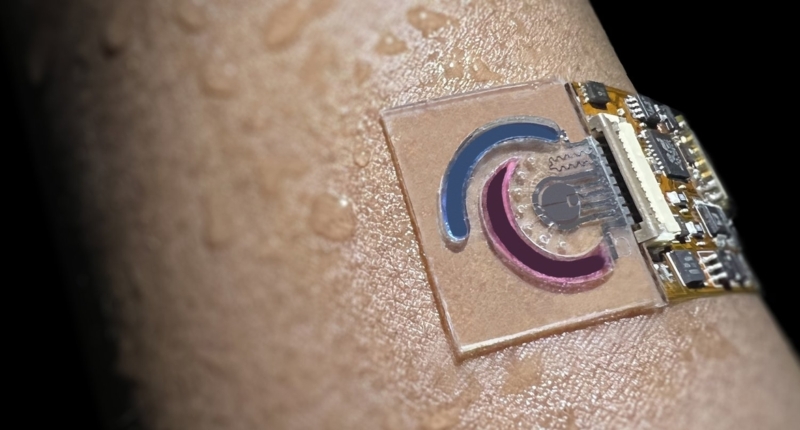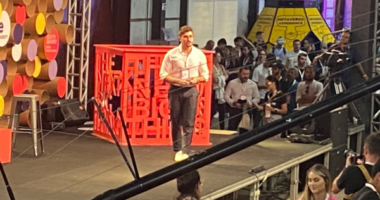The Wearable Sensors Market report provides a detailed overview of the industry, including changing market dynamics, in-depth market breakdown by type and application, and historic, existing, and predictable market size in terms of extent and worth. The report also covers recent manufacturing trends and developments and the competitive landscape of the market. The report includes a section on the impact of the Covid-19 pandemic and the Russia-Ukraine War on the Wearable Sensors Market. The Wearable Sensors Market is segmented by type into Invasive Sensors and Non-invasive Wearable Sensors. Additionally, the market is segmented by application into Consumer Goods, Healthcare, Industrial, and Others. The report is recommended for industry participants looking to strengthen their position in the market. The report is available to purchase on the Market Intelligence Data website.

Wearable Sensors Market: Growth, Trends, Key Players, and Forecasts by 2029
The market intelligence data research has published a qualitative report on the Wearable Sensors Market, which provides an in-depth examination of the current trends, latest expansions, conditions, market size, various drivers, limitations, and key players, along with their profile details. The report covers the historical data from 2017 to 2022 and forecasts data from 2023 to 2029, based on revenue, to help market contributors expand their market positions. The report also provides an analysis of the impact of the Covid-19 pandemic on the Wearable Sensors Market from a global and regional perspective.
Key Findings:
The Global Wearable Sensors Market is expected to grow with a CAGR of 18.5% from 2023 to 2029. The report provides coverage of the market, mainly focusing on the regions of North America (NA), Europe (EU), Asia-Pacific (APAC), Latin America (LA), and the Middle East and Africa (MEA).
Top Key Players:
The report covers top key players in the Wearable Sensors Market, including Stmicroelectronics, Infineon Technologies, NXP Semiconductors, Robert Bosch, Invensense, Knowles Electronics, TE Connectivity, Mcube, Sensirion, AMS, Broadcom, Analog Devices, ARM, Panasonic, and Asahi Kasei.
Regional Analysis:
The report analyzes the market’s regional coverage, including the regions of North America (NA), Europe (EU), Asia-Pacific (APAC), Latin America (LA), and the Middle East and Africa (MEA).
Market Segment Analysis:
The report provides a preliminary review of the industry, definitions, classifications, and enterprise chain shape. Market analysis is furnished for the worldwide markets which include improvement tendencies, hostile view evaluation, and key regions development. Development policies and plans are discussed, and manufacturing strategies and fee systems are also analyzed.
This report is recommended for present market participants to strengthen their role in the Wearable Sensors Market. The report is available to download with an exclusive offer of a flat 25% discount on the Market Intelligence Data website.
Wearable Sensors Market Segmentation by Type and Application
The Wearable Sensors Market is segmented by type into Invasive Sensors and Non-invasive Wearable Sensors. Additionally, the market is segmented by application into Consumer Goods, Healthcare, Industrial, and Others.
Key Highlights:
The Wearable Sensors Market report provides a detailed overview of the industry, including changing market dynamics, in-depth market breakdown by type and application, and historic, existing, and predictable market size in terms of extent and worth. The report also covers recent manufacturing trends and developments and the competitive landscape of the market.
The report analyzes the market’s prospective and niche sectors/regions exhibiting promising growth. The report is available to download with an exclusive offer of a flat 20% discount on the Market Intelligence Data website. The report also includes a detailed table of contents.
COVID-19 and Russia-Ukraine War Influence Analysis:
The report includes a section on the impact of the Covid-19 pandemic and the Russia-Ukraine War on the Wearable Sensors Market. The section covers changes in aspects such as demand, consumption, transference, consumer behavior, supply chain management, export and import, and production. The report also highlights the key factors that will help create opportunities for players and stabilize the overall industry in the years to come.
Conclusion:
The Wearable Sensors Market report provides valuable insights into the market’s segmentation by type and application, as well as the impact of the Covid-19 pandemic and the Russia-Ukraine War on the industry. The report is recommended for industry participants looking to strengthen their position in the market. The report is available to purchase on the Market Intelligence Data website.
Key Matters and Players in the Wearable Sensors Market
The Wearable Sensors Market report covers the important matters drivers, opportunities, challenges, and dangers of the market. The report also identifies the essential market players in the Wearable Sensors industry. The forecast compound annual growth rate (CAGR) of the global market for the duration of the forecast period (2023-2029) is provided in the report. The anticipated value of the Wearable Sensors marketplace during the forecast period is also included in the report.
Customization:
The Wearable Sensors Market Report may well be modified to meet specific business needs, with up to 20% customization available at no added cost. Regions such as Asia, North America, and Europe are also available for region-wise coverage.
Contact Us:
For more information or to customize the report, contact Irfan Tamboli (Head of Sales) at market intelligence data via phone or email.
Don’t miss interesting posts on Famousbio









